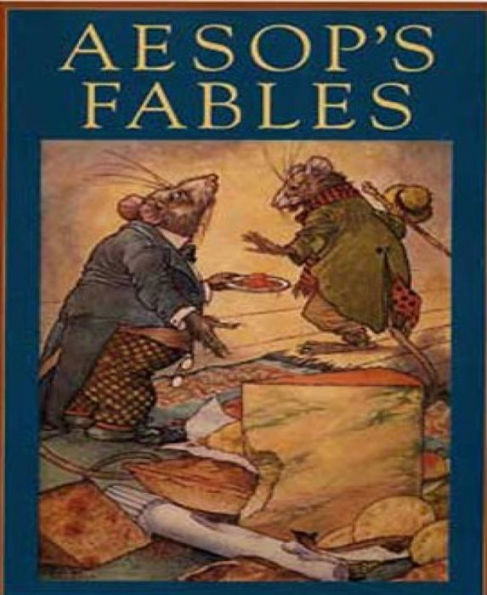Aesop's Fables is a collection of fables credited to Aesop, a slave and story-teller believed to have lived in ancient Greece between 620 and 560 BCE. Of diverse origins, the stories associated with Aesop's name have descended to modern times through a number of sources. They continue to be reinterpreted in different verbal registers and in popular as well as artistic mediums.In Classical times there were various theorists who tried to differentiate these fables from other kinds of narration. They had to be short and unaffected; in addition, they are fictitious, useful to life and true to nature. In them could be found talking animals and plants, although humans interacting only with humans figure in a few. Typically they might begin with a contextual introduction, followed by the story, often with the moral underlined at the end. Setting the context was often necessary as a guide to the story's interpretation, as in the case of the political meaning of The Frogs Who Desired a King and The Frogs and the Sun.Sometimes the titles given later to the fables have become proverbial, as in the case of 'killing the Goose that Laid the Golden Eggs or the Town Mouse and the Country Mouse. In fact some fables, such as The Young Man and the Swallow, appear to have been invented as illustrations of already existing proverbs. One theorist, indeed, went so far as to define fables as extended proverbs. In this they have an aetiological function, the explaining of origins such as, in another context, why the ant is a mean, thieving creature. Other fables, also verging on this function, are outright jokes, as in the case of The Old Woman and the Doctor, aimed at greedy practitioners of medicine.
1100279856
Aesop's Fables
Aesop's Fables is a collection of fables credited to Aesop, a slave and story-teller believed to have lived in ancient Greece between 620 and 560 BCE. Of diverse origins, the stories associated with Aesop's name have descended to modern times through a number of sources. They continue to be reinterpreted in different verbal registers and in popular as well as artistic mediums.In Classical times there were various theorists who tried to differentiate these fables from other kinds of narration. They had to be short and unaffected; in addition, they are fictitious, useful to life and true to nature. In them could be found talking animals and plants, although humans interacting only with humans figure in a few. Typically they might begin with a contextual introduction, followed by the story, often with the moral underlined at the end. Setting the context was often necessary as a guide to the story's interpretation, as in the case of the political meaning of The Frogs Who Desired a King and The Frogs and the Sun.Sometimes the titles given later to the fables have become proverbial, as in the case of 'killing the Goose that Laid the Golden Eggs or the Town Mouse and the Country Mouse. In fact some fables, such as The Young Man and the Swallow, appear to have been invented as illustrations of already existing proverbs. One theorist, indeed, went so far as to define fables as extended proverbs. In this they have an aetiological function, the explaining of origins such as, in another context, why the ant is a mean, thieving creature. Other fables, also verging on this function, are outright jokes, as in the case of The Old Woman and the Doctor, aimed at greedy practitioners of medicine.
3.99
In Stock
5
1

Aesop's Fables
154
Aesop's Fables
154Related collections and offers
3.99
In Stock

Product Details
| ISBN-13: | 9783736803510 |
|---|---|
| Publisher: | BookRix |
| Publication date: | 06/15/2019 |
| Sold by: | StreetLib SRL |
| Format: | eBook |
| Pages: | 154 |
| File size: | 998 KB |
From the B&N Reads Blog
